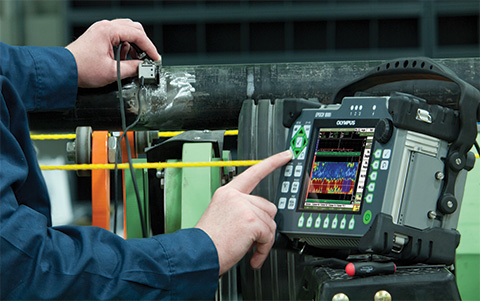Ultrasonic Flaw Detection Tutorial
3.7 Typical Specifications

When evaluating conventional flaw detectors, a number of functional characteristics are often specified. These characteristics are generally shared with phased array instruments. Not all of the items listed below are available in all instruments.
Pulser and Receiver:
Largely defines the operating range of transducers that can be used with the instrument.
| PULSER Available Spike Pulser Available Square Wave Pulser Pulser Repetition Frequency | RECEIVER Overall Bandwidth Available Narrowband Filters Time Varied Gain Overall Dynamic Range |
Measurement and Display:
Parameters defining the general measurement and display modes of an instrument -
- Number of alarm/measurement gates
- A-Scan display modes: Rectification (RF, Full Wave, Half Wave), Maximum, Composite, Averaged, Hollow, Filled, and Peak Memory
- Range
- Measurement Resolution
- Measurement types (i.e., sound path, depth, distance from front of probe, dB, dB to curve, etc.)
- Single Value B-Scan mode (not availble on most flaw detectors)
- Screen refresh rate
- Available sizing software
Physical/Operational:
- Size and weight
- Form factor, including control layout
- Compliance with industry standards for shock, vibration, drop, moisture, RF/EMI interference, etc.
- Battery life
Sorry, this page is not available in your country
Let us know what you're looking for by filling out the form below.